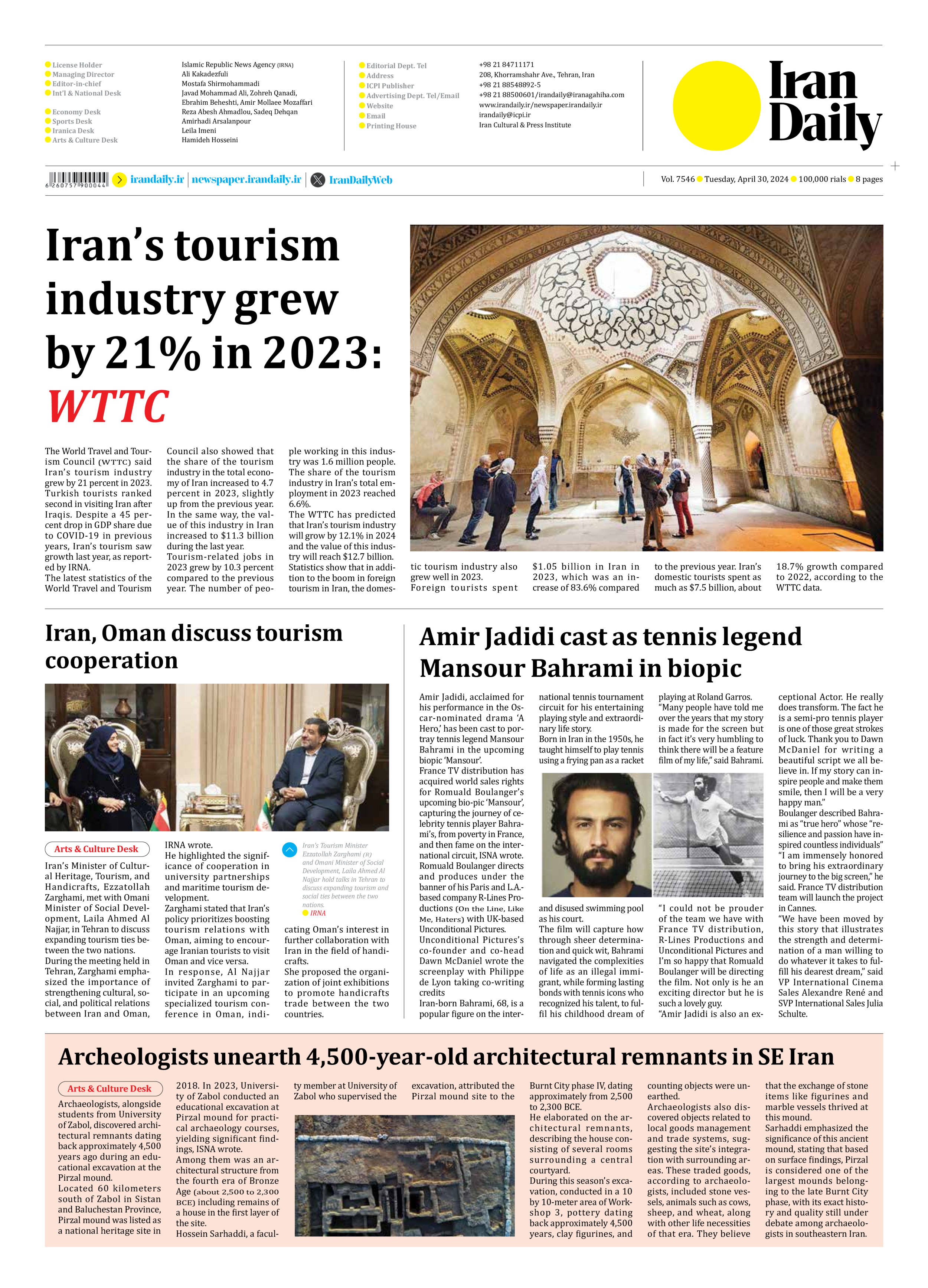
Copy in clipboard...
Archeologists unearth 4,500-year-old architectural remnants in SE Iran
Located 60 kilometers south of Zabol in Sistan and Baluchestan Province, Pirzal mound was listed as a national heritage site in 2018. In 2023, University of Zabol conducted an educational excavation at Pirzal mound for practical archaeology courses, yielding significant findings, ISNA wrote.
Among them was an architectural structure from the fourth era of Bronze Age (about 2,500 to 2,300 BCE) including remains of a house in the first layer of the site.
Hossein Sarhaddi, a faculty member at University of Zabol who supervised the excavation, attributed the Pirzal mound site to the Burnt City phase IV, dating approximately from 2,500 to 2,300 BCE.
He elaborated on the architectural remnants, describing the house consisting of several rooms surrounding a central courtyard.
During this season’s excavation, conducted in a 10 by 10-meter area of Workshop 3, pottery dating back approximately 4,500 years, clay figurines, and counting objects were unearthed.
Archaeologists also discovered objects related to local goods management and trade systems, suggesting the site’s integration with surrounding areas. These traded goods, according to archaeologists, included stone vessels, animals such as cows, sheep, and wheat, along with other life necessities of that era. They believe that the exchange of stone items like figurines and marble vessels thrived at this mound.
Sarhaddi emphasized the significance of this ancient mound, stating that based on surface findings, Pirzal is considered one of the largest mounds belonging to the late Burnt City phase, with its exact history and quality still under debate among archaeologists in southeastern Iran.







